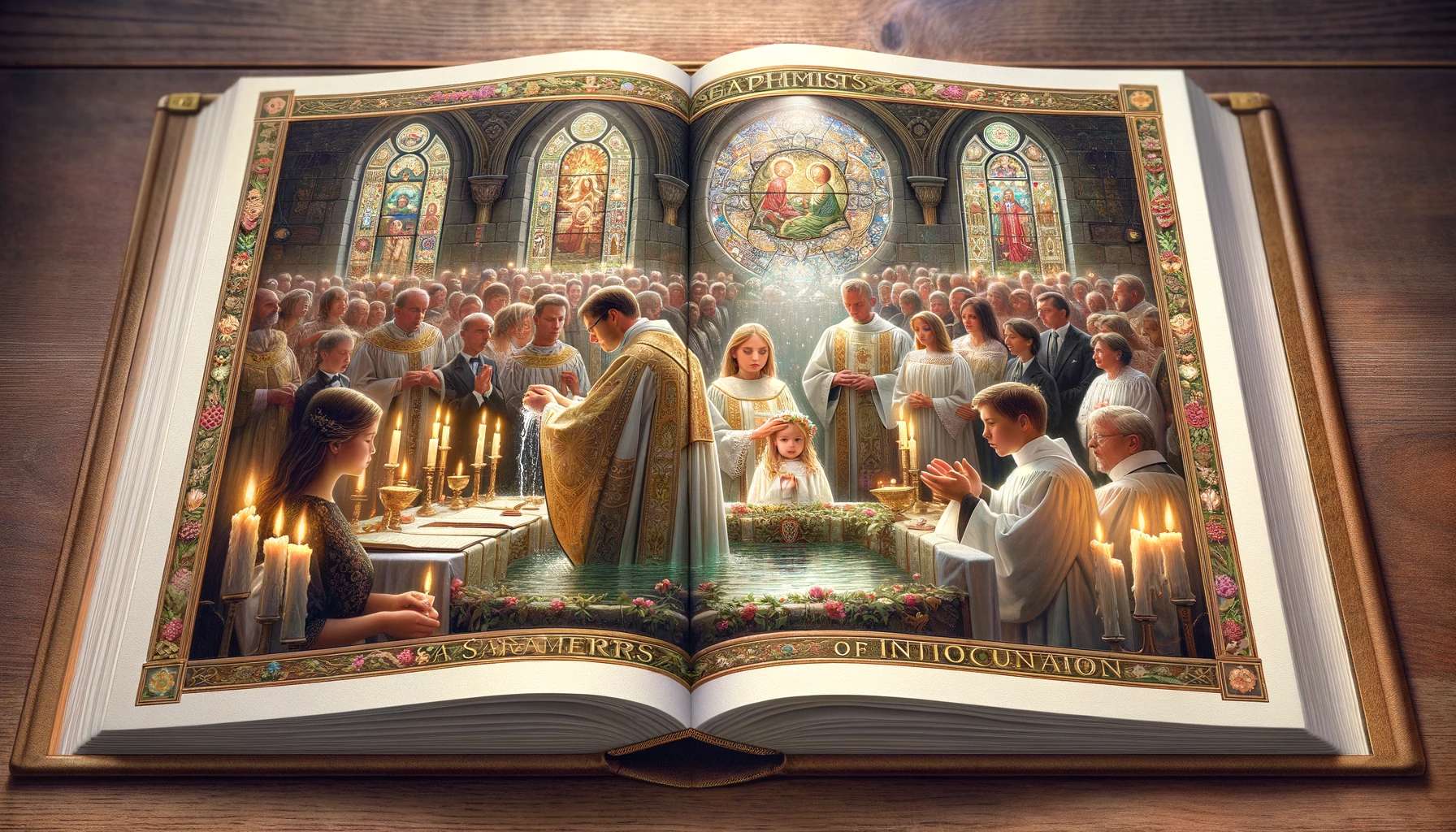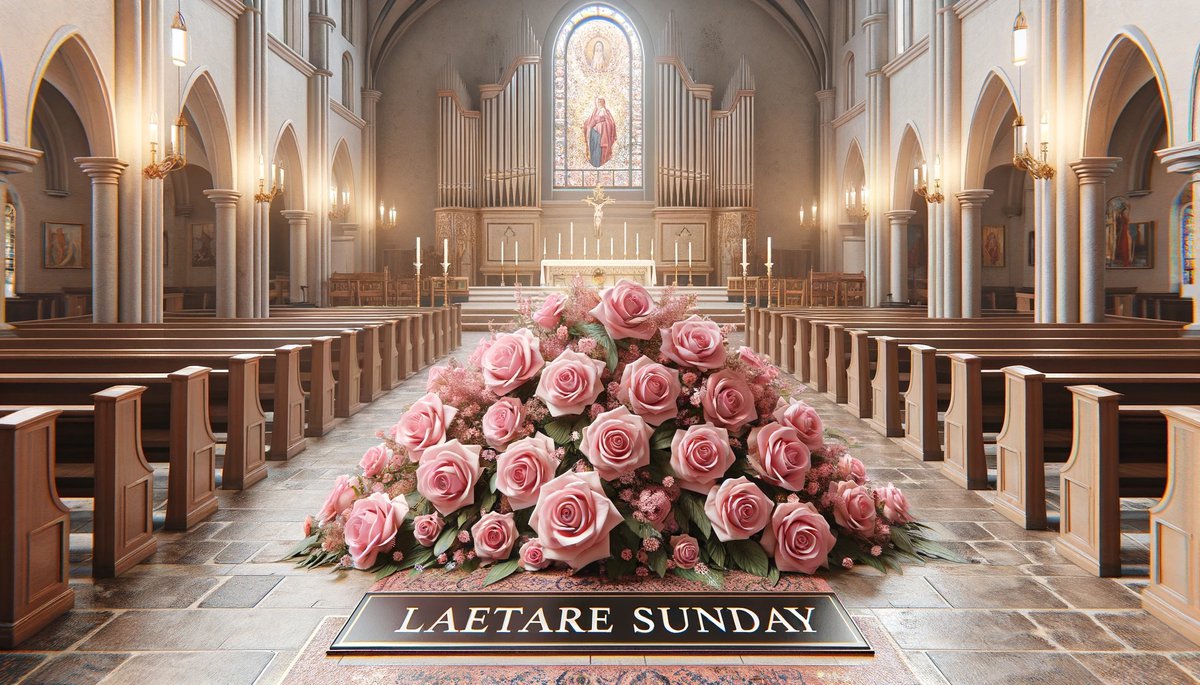Home>Theology and Spirituality>What Is A Communion Table Called


Theology and Spirituality
What Is A Communion Table Called
Published: February 19, 2024
Jason DeRose, Managing Editor at Christian.net, uses his expertise in religion and journalism to deepen understanding of faith's societal impacts. His editorial leadership, coupled with a strong academic background, enriches the platform’s diverse content, earning him recognition in both journalism and religious circles.
Discover the significance of the communion table, also known as the Lord's table, in theology and spirituality. Explore its role in Christian worship and tradition.
(Many of the links in this article redirect to a specific reviewed product. Your purchase of these products through affiliate links helps to generate commission for Christian.net, at no extra cost. Learn more)
Table of Contents
Introduction
The communion table, a central fixture in Christian worship, holds profound significance for believers around the world. Also known as the Lord's table, Eucharist table, or altar, this sacred piece of furniture serves as a focal point during the celebration of the Eucharist or Holy Communion. It symbolizes the gathering of Christ's followers to partake in the remembrance of his sacrificial death and resurrection.
The communion table stands as a tangible representation of the unity and fellowship shared among believers as they come together to commemorate the Last Supper, a pivotal event in Christian theology. Its presence in churches serves as a visual reminder of the central place that the Eucharist holds in the life of the Christian community.
Throughout history, the communion table has been revered as a place of encounter with the divine, where the faithful experience a profound connection with God through the partaking of the bread and wine. Its significance transcends mere physicality, embodying the spiritual nourishment and sustenance that believers receive through their participation in the Eucharistic celebration.
As we delve into the history, significance, and various names associated with the communion table, it becomes evident that this sacred piece of furniture holds a revered place in the hearts and minds of Christians across denominations. Its symbolism and ritualistic importance make it a focal point of reverence and contemplation, embodying the essence of Christian faith and practice.
In the subsequent sections, we will explore the rich history of the communion table, its profound significance in Christian worship, the diverse names by which it is known, and its role in different Christian traditions. Through this exploration, we aim to gain a deeper understanding of the communion table's central place in the tapestry of Christian spirituality and communal worship.
Read more: Why Is It Called Communion
The History of the Communion Table
The history of the communion table is deeply intertwined with the origins and development of Christian worship practices. Its roots can be traced back to the Last Supper, a pivotal event in the life of Jesus Christ and his disciples. During this final meal before his crucifixion, Jesus instituted the practice of sharing bread and wine as symbols of his body and blood, signifying the new covenant between God and humanity. This significant event laid the foundation for the ritual of Holy Communion, which has been central to Christian worship since the early days of the Church.
In the early Christian era, believers gathered in homes and communal spaces to partake in the Eucharistic meal, using simple tables or surfaces to hold the elements of bread and wine. As the Christian community grew and formalized its worship practices, the communion table evolved into a dedicated piece of furniture specifically designed for the celebration of the Eucharist. This transition marked the recognition of the table as a sacred focal point within the Christian worship space, symbolizing the presence of Christ and the unity of believers in partaking of the sacrament.
Throughout the centuries, the design and placement of the communion table have varied across different Christian traditions and cultural contexts. In some traditions, the table is positioned at the center of the sanctuary, emphasizing its central role in the worship experience. In others, it is placed against the eastern wall, symbolizing the orientation towards the rising sun and the anticipation of Christ's return. The materials used to construct the table have also reflected the artistic and cultural influences of different periods, ranging from simple wooden structures to ornately carved altars adorned with religious symbolism.
The Protestant Reformation brought about further changes in the understanding and presentation of the communion table. Reformers such as Martin Luther and John Calvin emphasized the symbolic nature of the Eucharist and sought to demystify the ritual, leading to alterations in the design and placement of the table within worship spaces. These shifts reflected theological convictions about the nature of the Eucharist and its significance as a communal act of remembrance and spiritual nourishment.
In contemporary Christian worship, the communion table continues to hold a central place, serving as a tangible link to the historical roots of the faith and a focal point for communal worship and spiritual reflection. Its rich history reflects the evolving practices and beliefs of the Christian community, embodying the enduring significance of the Eucharist in the life of believers across denominations and traditions.
The Significance of the Communion Table
The communion table holds profound significance within the Christian faith, serving as a focal point for the ritual of Holy Communion and embodying rich symbolism that resonates deeply with believers. At the heart of its significance lies the commemoration of the Last Supper, where Jesus shared bread and wine with his disciples, instructing them to partake in remembrance of him. This act of sharing in the elements of bread and wine symbolizes the sacrificial nature of Christ's death and the redemptive promise of his resurrection, forming the core of Christian belief and practice.
The communion table stands as a tangible representation of the unity and fellowship shared among believers as they come together to partake in the Eucharistic celebration. It serves as a visual reminder of the central place that the Eucharist holds in the life of the Christian community, fostering a sense of communal identity and shared spiritual heritage. Through the act of partaking in the bread and wine, believers reaffirm their connection to the body of Christ and their participation in the ongoing narrative of salvation history.
Furthermore, the communion table embodies the concept of spiritual nourishment and sustenance, signifying the transformative power of the Eucharist in the lives of believers. As participants partake in the elements, they are invited to encounter the living presence of Christ and experience a profound sense of spiritual renewal and communion with God and fellow believers. The act of coming to the table represents a sacred moment of encounter with the divine, where the faithful are invited to enter into a deeper awareness of God's abiding presence and grace.
The table also serves as a symbol of hospitality and inclusivity, reflecting the open invitation extended to all who seek to partake in the Eucharistic feast. It stands as a tangible expression of God's welcoming embrace, transcending barriers of race, ethnicity, and social status, and inviting all to share in the spiritual banquet of grace and reconciliation. In this sense, the communion table embodies the universal message of God's love and the transformative power of Christ's redemptive sacrifice, extending an invitation to all to partake in the life-giving sustenance offered through the Eucharistic celebration.
Overall, the communion table holds profound significance as a sacred symbol of unity, spiritual nourishment, and inclusive hospitality within the Christian tradition. Its enduring relevance and transformative power continue to shape the worship experience of believers, inviting them to partake in the timeless ritual of remembrance and communion with the living Christ.
Different Names for the Communion Table
The communion table, a central fixture in Christian worship, is known by various names across different denominations and cultural contexts. These diverse names reflect the rich tapestry of Christian traditions and the multifaceted significance attributed to this sacred piece of furniture. Each name carries its own theological and historical connotations, shedding light on the varied perspectives and practices surrounding the Eucharistic celebration.
-
The Lord's Table: This name emphasizes the central role of Christ in the Eucharistic feast, highlighting the table as a place of encounter with the living presence of Jesus. It underscores the theological significance of the Eucharist as a communal remembrance of Christ's sacrificial death and resurrection, inviting believers to partake in the spiritual banquet of grace and redemption.
-
The Eucharist Table: Derived from the Greek word "eucharistia," meaning thanksgiving, this name underscores the act of gratitude and praise inherent in the Eucharistic celebration. It reflects the profound sense of thanksgiving and adoration that permeates the ritual of Holy Communion, emphasizing the transformative power of gratitude in the life of believers.
-
The Altar: In certain Christian traditions, the communion table is referred to as the altar, drawing parallels to the sacrificial altars of the Old Testament. This name underscores the symbolic connection between the Eucharistic elements and the atoning sacrifice of Christ, highlighting the redemptive significance of the Eucharist as a sacred offering of thanksgiving and reconciliation.
-
The Communion Rail: In some liturgical traditions, the area surrounding the communion table is known as the communion rail, signifying the boundary between the sacred space of the Eucharistic celebration and the congregation. This name reflects the sense of reverence and solemnity associated with approaching the table to receive the bread and wine, underscoring the act of spiritual communion and participation in the body of Christ.
-
The Holy Table: This name emphasizes the sanctity and divine presence associated with the communion table, highlighting it as a consecrated space for encountering the living Christ. It underscores the sacred nature of the Eucharistic feast, inviting believers to approach the table with reverence and awe, acknowledging the transformative encounter with the holy in the act of partaking in the bread and wine.
-
The Table of Remembrance: Reflecting the commemorative aspect of the Eucharistic celebration, this name underscores the ritual of remembrance and reflection on Christ's redemptive sacrifice. It invites believers to recall the events of the Last Supper and the enduring significance of Christ's presence in the Eucharistic elements, fostering a sense of spiritual contemplation and connection to the historical roots of the faith.
These diverse names for the communion table reflect the multifaceted dimensions of the Eucharistic celebration within the Christian tradition. Each name carries its own theological nuances and historical resonances, enriching the worship experience and underscoring the enduring significance of the communion table as a sacred focal point of Christian communal worship.
The Communion Table in Different Christian Traditions
The communion table holds a central place in Christian worship, and its significance is manifested in diverse ways across different Christian traditions. The variations in the understanding and presentation of the communion table reflect the rich tapestry of theological perspectives, liturgical practices, and cultural expressions within the global Christian community.
In the Roman Catholic tradition, the communion table, known as the altar, occupies a prominent position within the sanctuary. Adorned with religious symbols and often crafted from ornate materials, the altar serves as the focal point for the celebration of the Eucharist. The ritual of the Mass centers around the consecration of the bread and wine, believed to undergo transubstantiation, becoming the actual body and blood of Christ. The reverence and solemnity associated with the altar underscore the sacramental nature of the Eucharistic celebration, inviting believers to encounter the real presence of Christ in the consecrated elements.
In contrast, the Protestant traditions exhibit a diverse range of approaches to the communion table. In many Protestant churches, the table is positioned at the center of the worship space, symbolizing its central role in the communal act of remembrance and spiritual nourishment. The emphasis on the symbolic nature of the Eucharist underscores the Protestant conviction that the bread and wine serve as visible signs of Christ's presence and the redemptive promise of his sacrifice. The communion table in Protestant traditions often reflects simplicity in design, reflecting the theological emphasis on the accessibility of the Eucharistic feast to all believers.
Within the Eastern Orthodox tradition, the communion table, referred to as the holy table, holds a sacred and revered place within the sanctuary. Adorned with intricate iconography and vested in richly embroidered coverings, the holy table symbolizes the heavenly banquet and the eschatological dimension of the Eucharistic celebration. The ritual of the Divine Liturgy centers around the offering of the bread and wine, accompanied by elaborate liturgical gestures and hymns that convey the mystical and transcendent nature of the Eucharistic feast.
In the Anglican tradition, the communion table, often referred to as the Lord's table, occupies a central position within the sanctuary, reflecting the theological emphasis on the communal aspect of the Eucharistic celebration. The table serves as a focal point for the liturgical action of the Holy Communion, embodying the Anglican understanding of the Eucharist as a sacrament of unity and spiritual nourishment. The design and placement of the table in Anglican worship spaces often reflect a balance between reverence and accessibility, inviting believers to partake in the Eucharistic feast with a sense of awe and communal participation.
Overall, the communion table in different Christian traditions embodies the diverse theological perspectives and liturgical practices that enrich the worship experience of believers. Its varied presentations reflect the enduring significance of the Eucharistic celebration as a central aspect of Christian communal worship, inviting believers to encounter the living presence of Christ and partake in the spiritual banquet of grace and redemption.
Read more: What Is Communion Bread Called
Conclusion
The communion table, known by various names such as the Lord's table, Eucharist table, or altar, stands as a timeless symbol of Christian communal worship and spiritual nourishment. Its rich history, profound significance, diverse names, and varied presentations across Christian traditions underscore its enduring relevance as a focal point of the Eucharistic celebration.
Throughout the centuries, the communion table has served as a tangible link to the historical roots of the Christian faith, embodying the central act of remembrance and communion with the living Christ. Its origins can be traced back to the Last Supper, where Jesus instituted the practice of sharing bread and wine as symbols of his body and blood, laying the foundation for the ritual of Holy Communion. The evolution of the communion table from simple surfaces to dedicated pieces of furniture reflects the development of Christian worship practices and the enduring importance of the Eucharistic celebration in the life of the Church.
The communion table holds profound significance as a symbol of unity, spiritual nourishment, and inclusive hospitality within the Christian tradition. It serves as a visual reminder of the central place that the Eucharist holds in the life of the Christian community, fostering a sense of communal identity and shared spiritual heritage. The act of partaking in the bread and wine invites believers to encounter the living presence of Christ and experience a profound sense of spiritual renewal and communion with God and fellow believers.
The diverse names for the communion table, such as the Lord's table, Eucharist table, altar, communion rail, holy table, and table of remembrance, reflect the multifaceted dimensions of the Eucharistic celebration within the Christian tradition. Each name carries its own theological nuances and historical resonances, enriching the worship experience and underscoring the enduring significance of the communion table as a sacred focal point of Christian communal worship.
In different Christian traditions, including Roman Catholic, Protestant, Eastern Orthodox, and Anglican, the communion table manifests varied presentations that reflect the rich tapestry of theological perspectives, liturgical practices, and cultural expressions within the global Christian community. Whether as the altar in Roman Catholic tradition, the central table in Protestant churches, the holy table in Eastern Orthodox tradition, or the Lord's table in Anglican tradition, the communion table embodies the diverse theological perspectives and liturgical practices that enrich the worship experience of believers.
In conclusion, the communion table stands as a timeless symbol of Christian faith and communal worship, inviting believers to partake in the timeless ritual of remembrance and communion with the living Christ. Its enduring significance transcends denominational boundaries, reflecting the universal message of God's love and the transformative power of Christ's redemptive sacrifice. As believers gather around the communion table, they are invited to encounter the living presence of Christ, experience spiritual nourishment, and participate in the ongoing narrative of salvation history, embodying the essence of Christian faith and practice.














